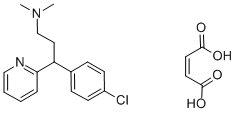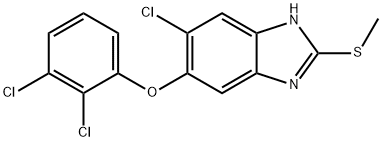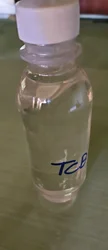1,3,5-Trichlorobenzene
- CAS NO.:108-70-3
- Empirical Formula: C6H3Cl3
- Molecular Weight: 181.45
- MDL number: MFCD00000585
- EINECS: 203-608-6
- Update Date: 2025-01-27 09:38:02

What is 1,3,5-Trichlorobenzene?
Description
Trichlorobenzenes (TCBs) are synthetic chemicals that occur in three different isomeric forms. The three chlorinated cyclic aromatic isomers are 1,2,3-trichlorobenzene (1,2,3-TCB), 1,2,4-trichlorobenzene (1,2,4-TCB), and 1,3,5-trichlorobenzene (1,3,5-TCB). 1,2,4-TCB is one of the 188 chemicals designated as a hazardous air pollutant under the Clean Air Act.
Chemical properties
white to beige crystalline powder
The Uses of 1,3,5-Trichlorobenzene
1,3,5-Trichlorobenzene is used for someof these applications plus as a termite preparation and insecticide. These compounds are found as unintended by-products of the manufacture of the mono- and dichlorobenzenes.
The Uses of 1,3,5-Trichlorobenzene
Trichlorobenzenes are primarily used as solvents in chemical manufacturing industries. 1,2,4-Trichlorobenzene is economically the most important isomer. 1,2,4-Trichlorobenzene is used as a solvent in chemical reactions to dissolve oils, waxes, and resins. Furthermore, it is also used as a dye carrier. 1,2,3- Trichlorobenzene is used as an intermediate for pesticides production, pigments, and dyes. 1,3,5-Trichlorobenzene is not marketed commercially and has very limited use as a chemical intermediate. Besides, trichlorobenzenes can also be used as degreasing agents, as septic tanks and drain cleaners, and as an ingredient in wood preservatives and abrasive formulations. Other minor uses include metal work, anticorrosive paint, and corrosion inhibitor in sprays. In the past, mixed isomers of trichlorobenzenes were used to control termites; however, their use has been discontinued.
The Uses of 1,3,5-Trichlorobenzene
1,3,5-Trichlorobenzene is an isomer of 1,2,4-Trichlorobenzene (T774220) which is a solvent in various organic chemical reactions.
Definition
ChEBI: 1,3,5-trichlorobenzene is a trichlorobenzene carrying chloro substituents at positions 1, 3 and 5.
General Description
White to off-white crystals.
Air & Water Reactions
Insoluble in water.
Reactivity Profile
Can react vigorously with oxidizing materials. .
Fire Hazard
1,3,5-Trichlorobenzene is combustible.
Safety Profile
Moderately toxic by ingestion and intraperitoneal routes. Mutation data reported. When heated to decomposition it emits toxic vapors of Cl-.
Environmental Fate
Biological. Under aerobic conditions, soil microbes degraded 1,3,5-trichlorobenzene to 1,3- and
1,4-dichlorobenzene and carbon dioxide (Kobayashi and Rittman, 1982). A mixed culture of soil
bacteria or a Pseudomonas sp. transformed 1,3,5-trichlorobenzene to 2,4,6-trichlorophenol
(Ballschiter and Scholz, 1980).
In an enrichment culture derived from a contaminated site in Bayou d’Inde, LA, 1,3,5-
trichlorobenzene underwent reductive dechlorination yielding 1,3-dichlorobenzene. The maximum
dechlorination rate, based on the recommended Michaelis-Menten model, was 9.5 nM/d
(Pavlostathis and Prytula, 2000).
Photolytic. The sunlight irradiation of 1,3,5-trichlorobenzene (20 g) in a 100-mL borosilicate
glass-stoppered Erlenmeyer flask for 56 d yielded 160 ppm pentachlorobiphenyl (Uyeta et al.,
1976). A photooxidation half-life of 6.17 months was reported for the vapor-phase reaction of
1,3,5-trichlorobenzene with OH radicals (Atkinson, 1985).
Purification Methods
Recrystallise it from dry *benzene or toluene. [Beilstein 5 IV 666.]
Toxicity evaluation
The liver is themain target of trichlorobenzenes irrespective of the route of exposure. The mechanisms of liver toxicity induced by these chemicals have not been illustrated. It might involve intermediate arene oxides formed during initial transformation to trichlorophenols. In addition, exposure to 1,2,4-TCB induced porphyria in rats by inducing daminolevulinic acid (ALA) synthetase, a rate-limiting enzyme in the biosynthesis of heme, and also heme oxygenase, a ratelimiting enzyme in the degradation of heme synthetase, and therefore increasing heme production.
Properties of 1,3,5-Trichlorobenzene
| Melting point: | 63 °C |
| Boiling point: | 208 °C(lit.) |
| Density | 1.4528 (estimate) |
| vapor pressure | 0.58 at 25 °C (quoted, Mackay et al., 1982) |
| refractive index | 1.5693 (estimate) |
| Flash point: | 260 °F |
| storage temp. | 0-6°C |
| solubility | Soluble in benzene, ether, ligroin (Weast, 1986), glacial acetic acid, carbon disulfide, and
petroleum ether (Windholz et al., 1983) |
| form | powder or crystals |
| color | Off-White |
| Water Solubility | Insoluble in water. |
| Merck | 14,9632 |
| BRN | 1635233 |
| Henry's Law Constant | 1.83, 2.04, 2.64, 4.49, and 5.24 at 2.0, 6.0, 10.0, 18.0, and 25.0 °C, respectively (EPICS-SPME,
Dewulf et al., 1999) |
| Stability: | Stable. Incompatible with acids, strong oxidizing agents. |
| CAS DataBase Reference | 108-70-3(CAS DataBase Reference) |
| NIST Chemistry Reference | Benzene, 1,3,5-trichloro-(108-70-3) |
| EPA Substance Registry System | 1,3,5-Trichlorobenzene (108-70-3) |
Safety information for 1,3,5-Trichlorobenzene
| Signal word | Warning |
| Pictogram(s) |
 Exclamation Mark Irritant GHS07 |
| GHS Hazard Statements |
H315:Skin corrosion/irritation H319:Serious eye damage/eye irritation H335:Specific target organ toxicity, single exposure;Respiratory tract irritation H412:Hazardous to the aquatic environment, long-term hazard |
| Precautionary Statement Codes |
P261:Avoid breathing dust/fume/gas/mist/vapours/spray. P273:Avoid release to the environment. P280:Wear protective gloves/protective clothing/eye protection/face protection. P305+P351+P338:IF IN EYES: Rinse cautiously with water for several minutes. Remove contact lenses, if present and easy to do. Continuerinsing. |
Computed Descriptors for 1,3,5-Trichlorobenzene
1,3,5-Trichlorobenzene manufacturer
JSK Chemicals
Reliable Traders
New Products
Indole Methyl Resin tert-butyl 9-methoxy-3-azaspiro[5.5]undecane-3-carboxylate Boc-His(Boc)-OH 2-CTC Resin 4-Chloro-7-tosy1-7Hpyrrolo[2,3-d]pyrimidine 5,7-Dibromo-1H-indole 2,5-dichloro-N-hydroxy-4,6-dimethylpyridine-3-carboximidamide 2,2-Dimethoxy-7-azaspiro[3.5]nonane hydrochloride 4-chloromethyl-5-methyl-1,3-dioxol-2-one (DMDO-Cl) R-2-BENZYLOXY PROPIONIC ACID 1,1’-CARBONYLDIIMIDAZOLE 1,1’-CARBONYLDI (1,2-4 TRIAZOLE) N-METHYL INDAZOLE-3-CARBOXYLIC ACID 4-((2-hydroxyethyl)thio)benzoic acid 1-(TERT-BUTOXYCARBONYL)-2-PYRROLIDINONE Methyl 6-methylnicotinate 3-Pyridineacrylic acid tert-Butyl carbazate TETRAHYDRO-2H-PYRAN-3-OL 2-((4-morpholinophenylamino) (methylthio) methylene) malononitrile 3-(4-morpholinophenylamino)-5-amino-1H-pyrazole-4-carbonitrile 2,4-dihydroxybenzaldehyde 1,3-Diethyl-1,3-Diphenylurea Methyl 2-methylquinoline-6-carboxylateRelated products of tetrahydrofuran








You may like
-
 Tri Chloro Benzene 99%View Details
Tri Chloro Benzene 99%View Details -
 1,3,5-Trichlorobenzene 98%View Details
1,3,5-Trichlorobenzene 98%View Details -
 1,3,5-Trichlorobenzene 108-70-3 98%View Details
1,3,5-Trichlorobenzene 108-70-3 98%View Details
108-70-3 -
 1,3,5-Trichlorobenzene (1,3,5-TCB) pure CAS 108-70-3View Details
1,3,5-Trichlorobenzene (1,3,5-TCB) pure CAS 108-70-3View Details
108-70-3 -
 1,3,5-Trichlorobenzene CAS 108-70-3View Details
1,3,5-Trichlorobenzene CAS 108-70-3View Details
108-70-3 -
 Trichlorobenzene Liquid Chemical, Grade: A Grade, Purity: 99 PercentView Details
Trichlorobenzene Liquid Chemical, Grade: A Grade, Purity: 99 PercentView Details
108-70-3 -
 Trichlorobenzene, Grade: Industrial, Purity: 99View Details
Trichlorobenzene, Grade: Industrial, Purity: 99View Details
108-70-3 -
 Trichlorobenzene CAS 120-82-1View Details
Trichlorobenzene CAS 120-82-1View Details
108-70-3
